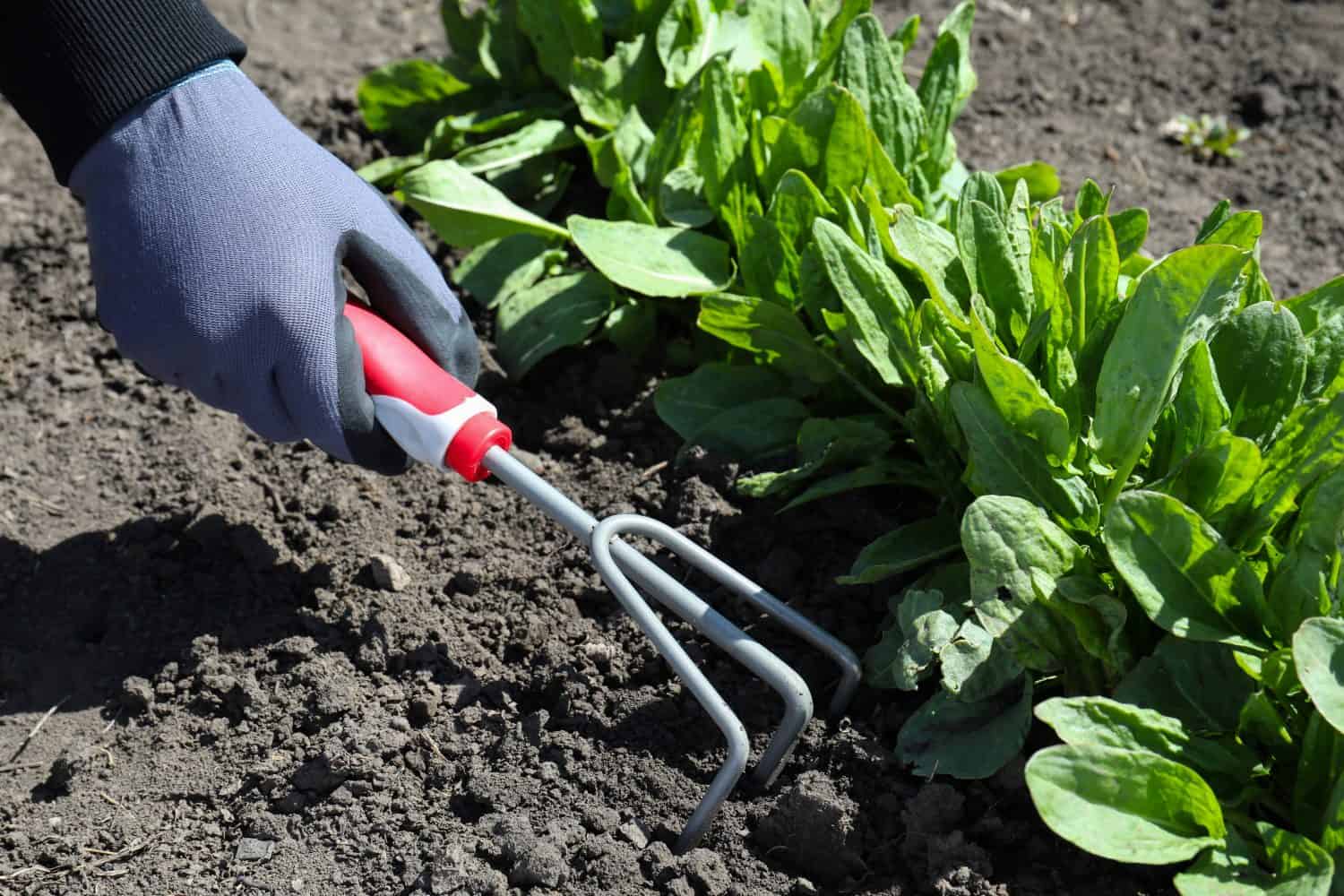Our bodies rely on vitamin D for strong bones, a healthy nervous system, protection from disease, and even well-balanced mental health. Fortunately, you can get vitamin D by soaking up some sunshine and growing high-vitamin D vegetables in your garden. But here’s a rather surprising twist: some of the best “vegetables” for vitamin D are actually fungi — mushrooms! Mushrooms naturally absorb sunlight and store it as vitamin D, making them an excellent option for a homegrown nutritious boost. Although they are technically fungi, mushrooms are also considered “vegetables” in terms of culinary use and nutrition. So, let’s explore the best to grow for an extra boost of vitamin D!
1. Shiitake Mushrooms (Lentinula edodes)
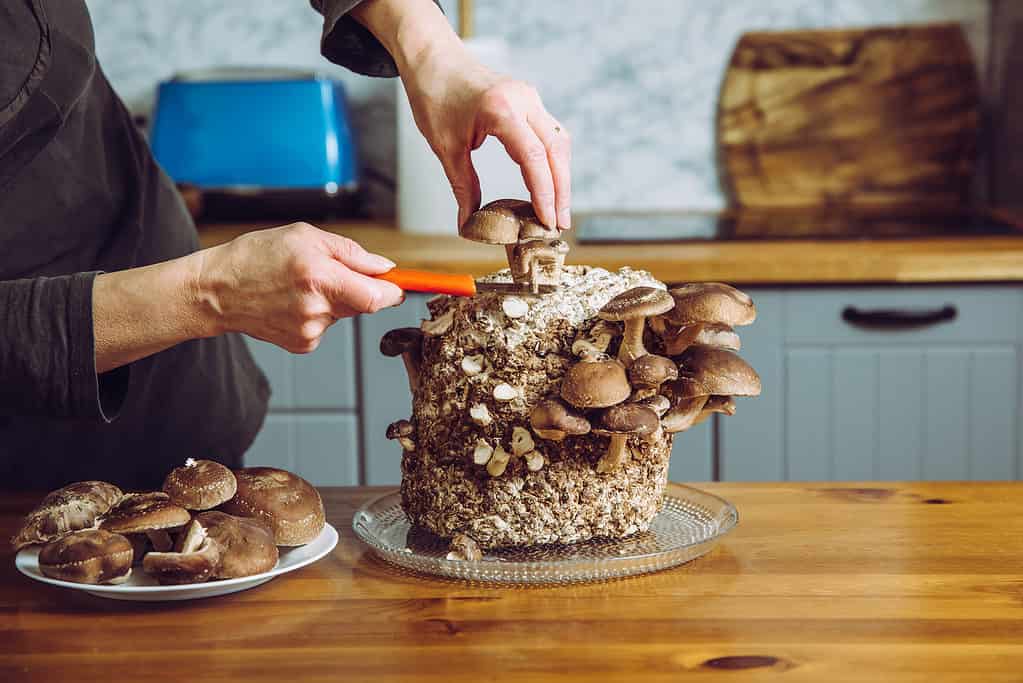
Shiitake mushrooms were cultivated as early as the 1200s.
©FotoHelin/Shutterstock.com
When exposed to sunlight, shiitake mushrooms produce vitamin D2, making them a good alternative for vegetarians. However, commercially grown mushrooms are usually grown in darkness. When grown in the dark without UV (ultraviolet) light, 100 grams of raw shiitake mushrooms contain about 18 IU (International Units). But with UV light, 100 grams of dried mushrooms contain 154 IU of vitamin D. So, to get more vitamin D, you’ll want your mushrooms to get plenty of sunshine!
2. Maitake Mushrooms (Grifola frondosa)

Maitake means “dancing mushroom”.
©puttography/Shutterstock.com
One of the largest high-vitamin D vegetables to grow in your garden is the maitake mushroom, which can weigh up to 50 pounds! Unlike many other mushrooms, maitake mushrooms actually have vitamin D even without UV light. According to the U.S. Department of Agriculture, raw maitake mushrooms contain more vitamin D than other mushrooms, with 1,120 IU of Vitamin D2 and D3 per 100 grams.
3. Portobello Mushrooms (Agaricus bisporus)

Portobello mushrooms can grow around 6 inches across.
©PIXbank CZ/Shutterstock.com
Similar to shitake mushrooms, portobello (or portabella) mushrooms are a good source of vitamin D if exposed to ultraviolet light while growing. Portobello mushrooms are great vegetables to grow in your garden for vitamin D. However, commercially grown mushrooms are grown in the dark, so they won’t have vitamin D (unless it is actually labeled “vitamin D enriched” or “UV-treated”). However, 100 grams of raw portobello mushrooms that have been exposed to UV light contain 1,048 IU of vitamin D!
4. White Button Mushrooms (Agaricus bisporus)
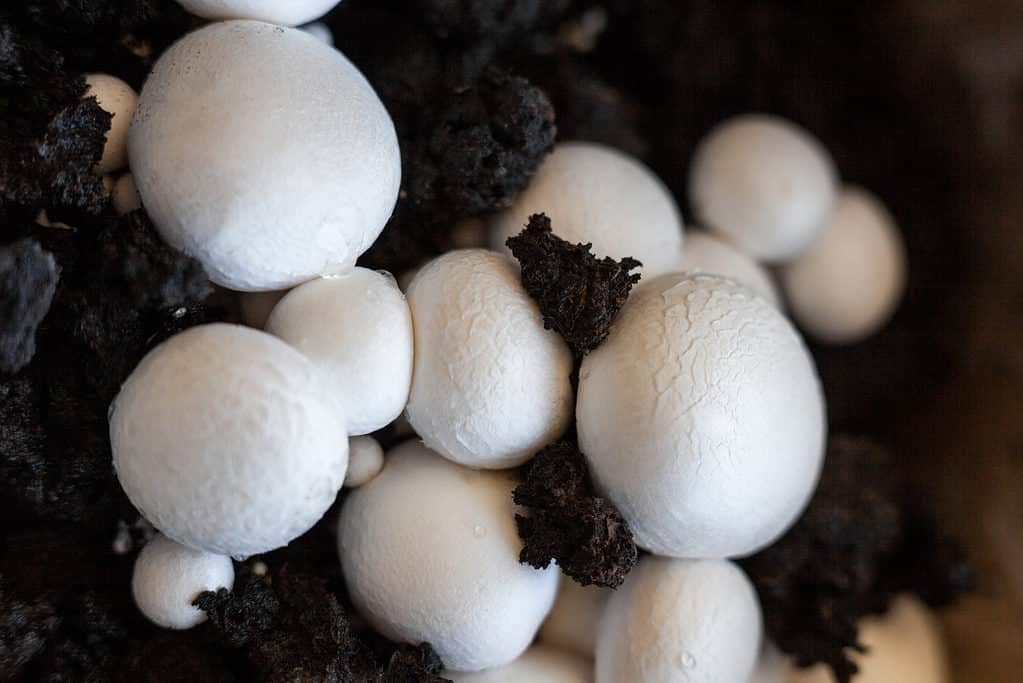
White button mushrooms are an immature form of portobello mushrooms.
©rootstock/Shutterstock.com
Also known as button mushrooms, white mushrooms are a very popular homegrown variety. When treated with UV during their cultivation, these yummy mushrooms produce vitamin D2. When grown under UV light, 100 grams of white mushrooms can provide 1,050 IU of vitamin D. However, without UV light, white button mushrooms only have 0.9 IU per 100 grams.
5. Beech Mushrooms (Hypsizygus tessulatus)
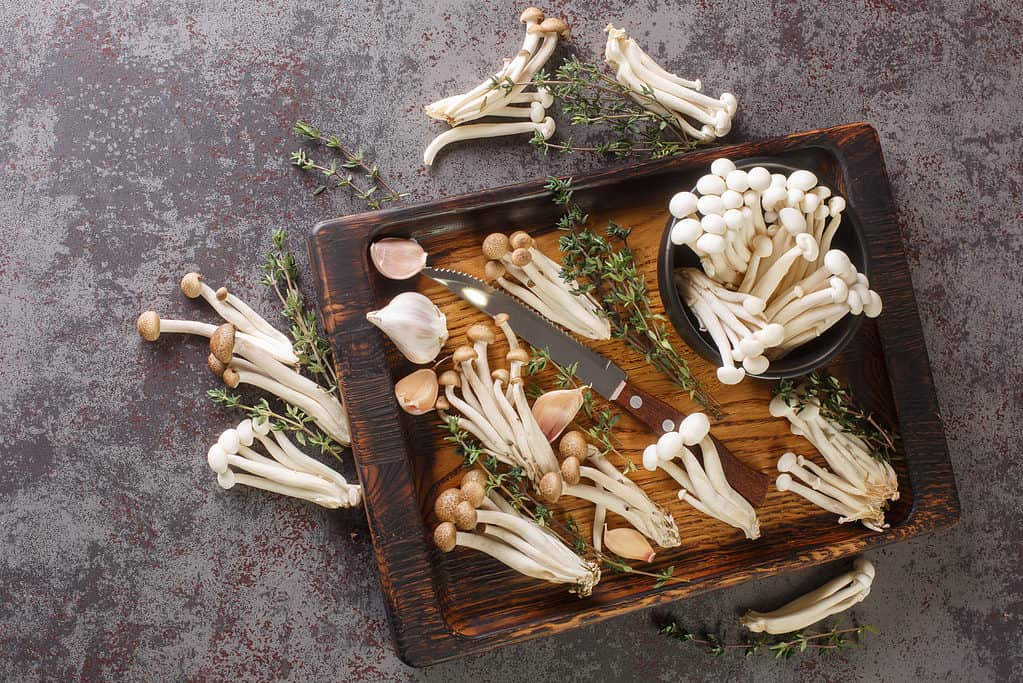
Beech mushrooms are rich in potassium, vitamin D, and vitamin B.
©iStock.com/ALLEKO
Even without exposure to UV light, raw beech mushrooms contain 20.4 IU of Vitamin D (D2, D3, and D4) per 100 grams! These versatile vegetables can be enjoyed raw or cooked, making them a delicious addition to many incredible dishes. Native to Asia, beech mushrooms are popular in Japan and China. They are known as shimeji and are often found growing on beech trees.
6. Morel Mushrooms (Morchella)
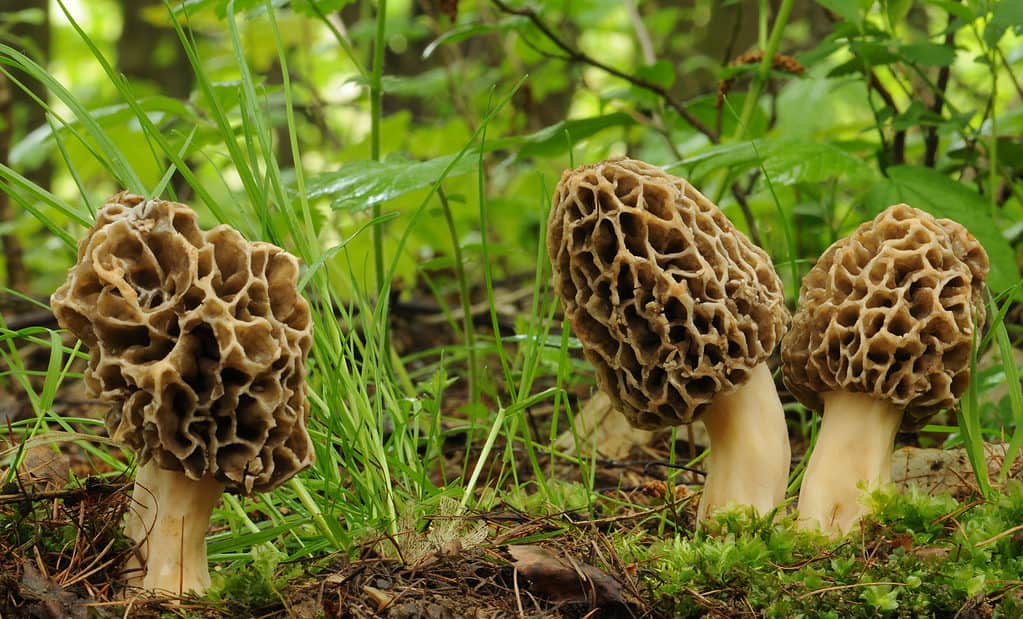
Morel mushrooms are popular in French and Catalan dishes.
©Tomasz Czadowski/Shutterstock.com
The caps of morel mushrooms look like brains or some sort of sea sponge with all their pits and ridges. Unlike many other vitamin D-rich mushrooms, morels aren’t commonly cultivated commercially. This means you’ll have to find them in the wild or grow them in your garden. However, be careful! There are also some toxic look-a-likes, so make sure yours are true morel mushrooms. The good news is that 100 grams of raw morel mushrooms contain around 206 IU of vitamin D.
7. Oyster Mushrooms (Pleurotus ostreatus)
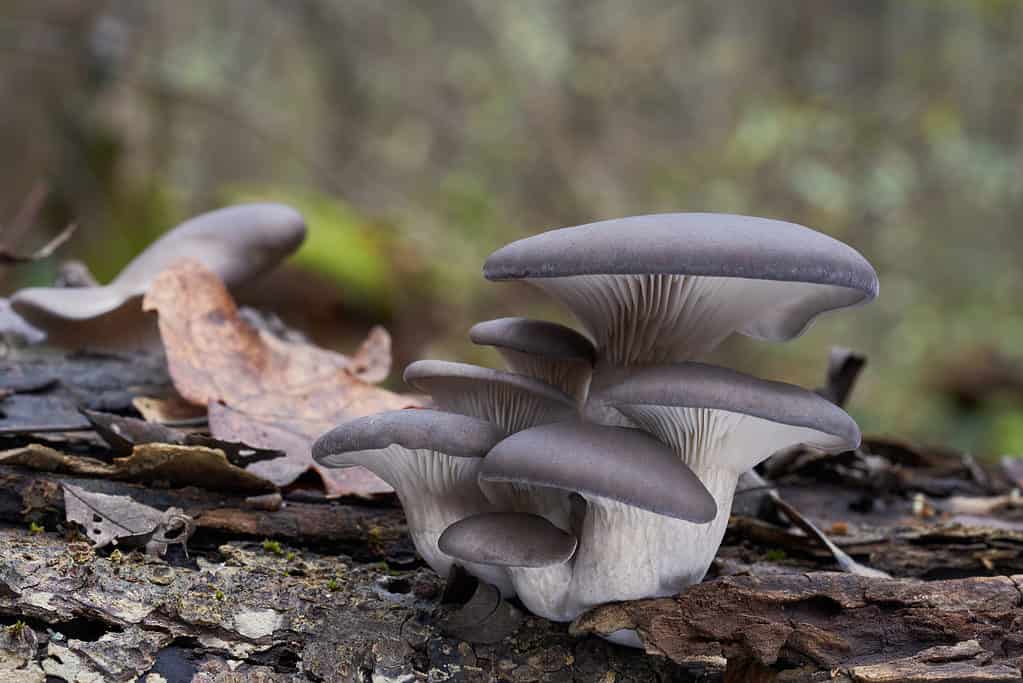
The oyster mushroom is a very popular variety to hunt in the wild.
©iStock.com/Igor Kramar
Oyster mushrooms live up to their name with flat, oyster-shaped caps. In addition, they’re also one of the easiest mushrooms to cultivate at home, making them the perfect high-vitamin D vegetable for beginners. 100 grams of raw oyster mushrooms offers around 29 IU of Vitamin D.
8. Chanterelle Mushrooms (Cantharellus californicus)
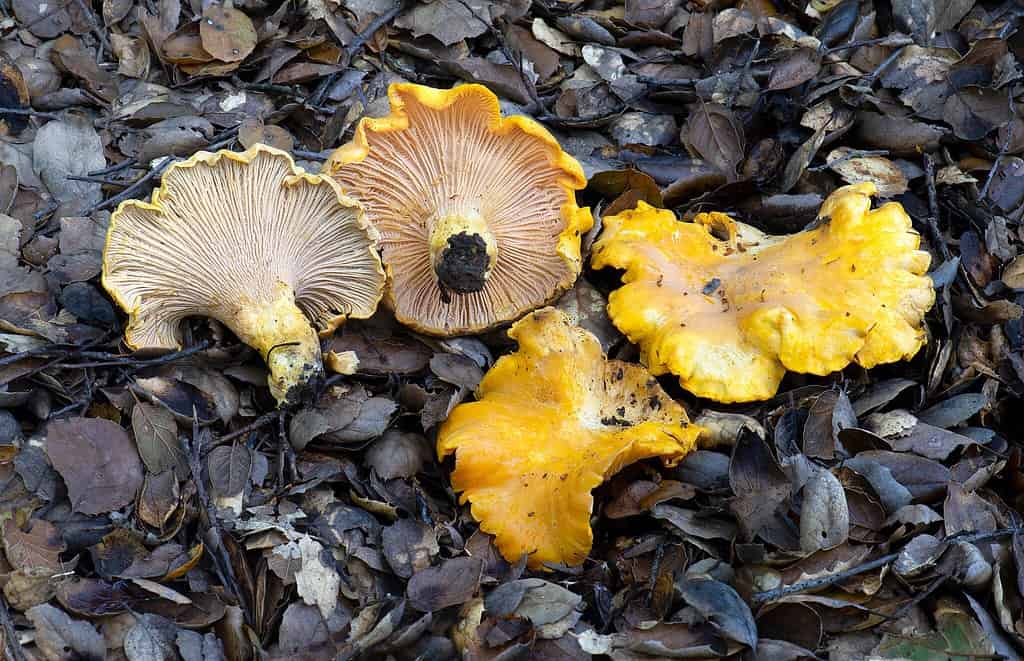
The California golden chanterelle mushroom is the official state mushroom of California.
Native to California’s oak woodlands, chanterelle mushrooms are a beautiful golden-orange color and are often collected by locals. These beauties have a mycorrhizal symbiotic relationship with oak trees as the two live together and help one another. In addition, 100 grams of raw chanterelle mushrooms contain 212 IU of vitamin D.
9. Enoki Mushrooms (Flammulina filiformis)
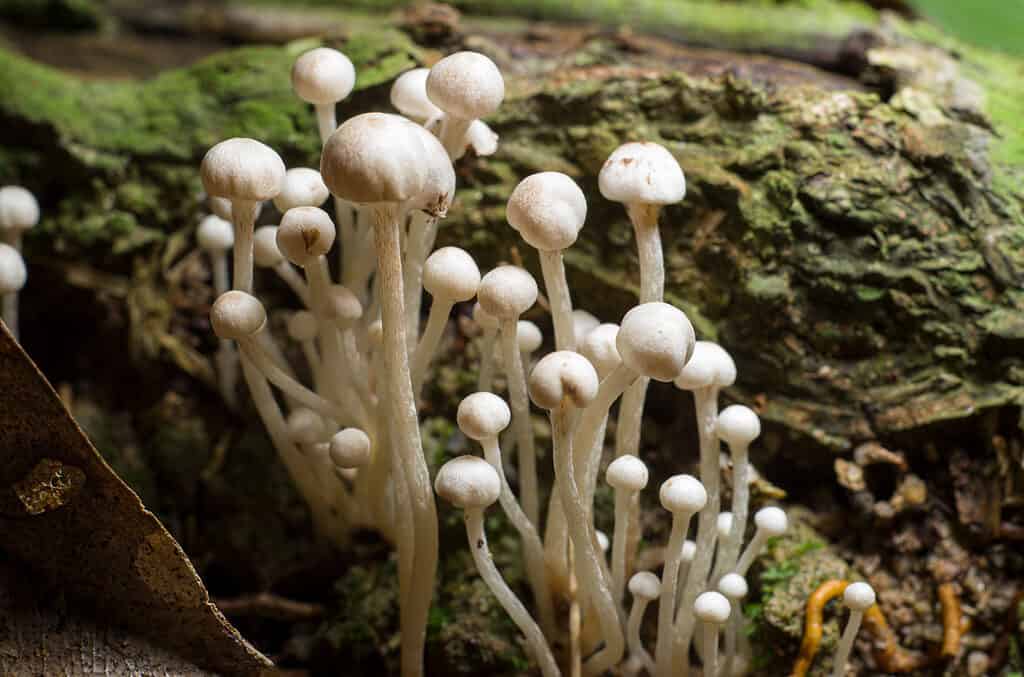
Individuals of enoki mushrooms can grow up to 2 inches tall.
©iStock.com/Wirestock
A popular staple of Japanese cuisine, enoki mushrooms have been cultivated since 800 AD! However, their wild counterparts look very different from what you’ll find in the grocery store. Raw enoki mushrooms offer a mild dose of vitamin D, with 5 IU per 100 grams.
10. Lion’s Mane Mushrooms (Hericium erinaceus)
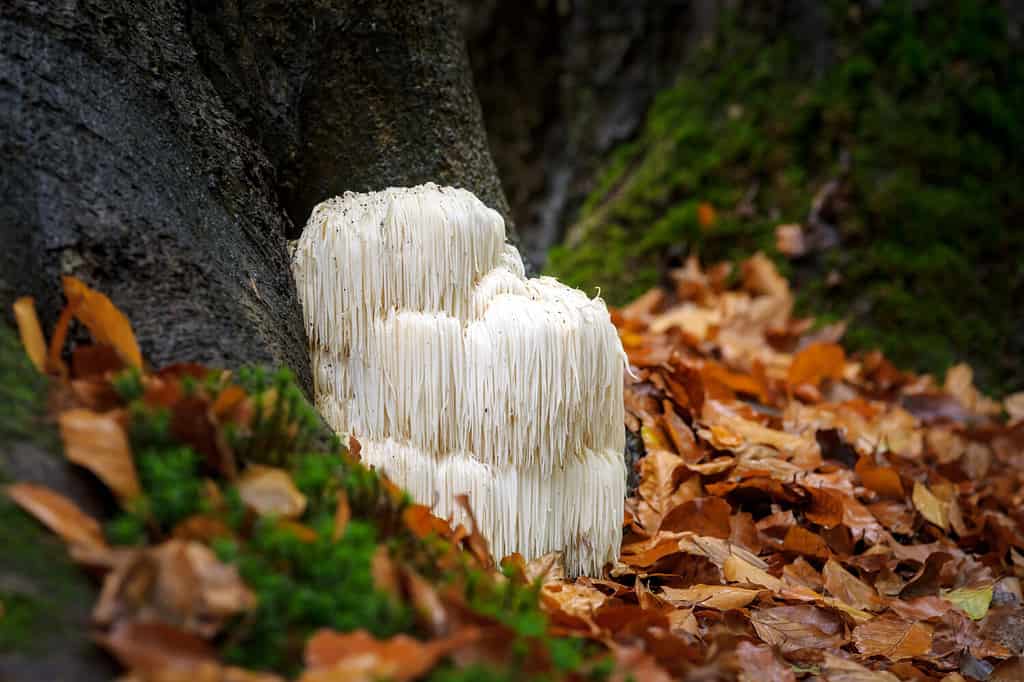
Lion’s mane mushrooms are rare and hard to find in the wild.
©Fotografiecor.nl/Shutterstock.com
Like their name, lion’s mane mushrooms have impressive shaggy spines hanging down from their caps like a mane of long hair. They aren’t quite as high in vitamin D as other vegetables, with just 0.8 IU per 100 grams, but they are still a great mushroom to grow in your garden. Research suggests that they may aid in fighting cancer, reducing inflammation, and even promoting nerve cell growth.
Thank you for reading! Have some feedback for us? Contact the AZ Animals editorial team.

